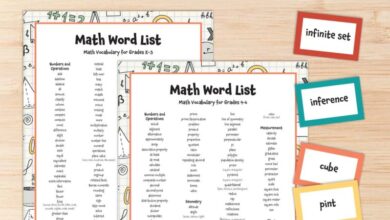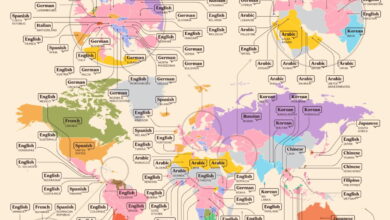What do you see in 33 + 45? A case for visual math

Overview:
Visualizing math helps students deepen understanding, build confidence, and connect abstract concepts to real-world thinking—one number line or doodle at a time.
When you hear or look at the math problem: 33 + 45… what do you see?
I ask students and even adults this question fairly often. The numbers in the equation may change but the question is always about what they see. I teach middle school math and I am a visual math learner. I am not sure when I started seeing math or utilizing visual methods to understand and solve math equations, but it seems like for as long as I can remember.
The answers I receive vary, to this question of what do people see, but oftentimes the response is: “nothing” or “I don’t see anything” and even “I just solve it”.
Why do I ask this question?
Why I even care to ask the question is twofold. First, I find it interesting. When someone says the word “calendar”, I see twelve calendars representing the months of the year and arranged in a type of parallelogram flow, going counter-clockwise. No one else I’ve talked to yet has reported seeing anything close to an image of a calendar, let alone a circulating type of chain. I find this intriguing.
Secondly, I believe that visual math skills are important and can aid in understanding various concepts. Back to “33 + 45”, I see a horizontal number line ranging from 0 to 100 from left to right and featuring hash marks representing tens and smaller marks representing ones. Visualizing 33 slightly to the right of 30, I then “hop” four tens to 73 and 5 small ones to 78. Instantly, I am there.
Visual Math Skills In Use
I work with students who sometimes struggle with fractions. Ratios, fractions, even decimals – these can all be visualized. By doing so, I feel, students can more wholly understand the concept. Fractions can be felt, moved around, added to or taken away from. When seen, they can take on a new meaning. Efficiency also, as described in the number line example, can be enhanced.
Adding and subtracting negative numbers can be tricky for students as well. When students have a number line visually-handy, whether vertical or horizontal, students can navigate the number line in the direction that the plus or minus tells them to go and ultimately land on the correct integer.
I should note that I work with many high achieving math students who perform very well in math class and who are not visual learners. I do understand every one of us has different learning styles, oftentimes a combination of different styles. Some of us do not need to utilize visual methods. Also important to note is that visual learning may or may not be possible for students who are blind.
Creating Visual Math
After attending an online training through the Bureau of Education about visual math learning this past year, I was equipped with skills on how to establish visual math memory. The numbers 1 through 10 were arranged on the screen. Five numbers on the top and five on the bottom. Each number transformed into a shape similar to the number. 1 was a baseball bat, 2 was a swan and 3 was something that now, interestingly enough, I cannot remember. After quickly going through these as a class, we were asked to recite what each number was. We scored almost 100% as a group. This showed that our short term memory now recognized and logged these numbers with an image. Not entirely useful, but more so symbolic, this exercise demonstrated that we can become visual learners in the area of math.
Practical Application: For Teachers
I believe that, while delivering universal design for learning, this sort of picture-painting should be considered as a teaching method. I feel there is a lot of crossover between math and art, too, and that art can be leveraged when it comes to math. Academic subjects can become siloed, where they can be fused to foster learning for all types of learners. Doodling is not widely accepted in classrooms, I think it is fair to say. What about the learners who benefit from doing this? As an adult, I have been at professional training with adult coloring books and physical manipulatives at the table, so I do know this is “a thing”.
With all of this being written, I want to provide a few actionable ideas for teachers, to spark visual math learning:
- Encourage students to draw out aspects of word problems as they read
- Ask students how math appears, visually, in everyday life
- Model drawing math on the board while delivering instruction
As educators, we never know what techniques students will end up placing in their toolbox down the road. However, promoting these visual learning methods can help to enhance young learners’ math minds.

Brendan is from Milwaukee, Wisconsin, home of the 2021 NBA Champion Milwaukee Bucks. He and his wife, Catreese, married in 2009 and have five children together. He has worked in social work and higher education for the bulk of his career and is currently endeavoring to implement financial literacy throughout Milwaukee’s K-8 system



